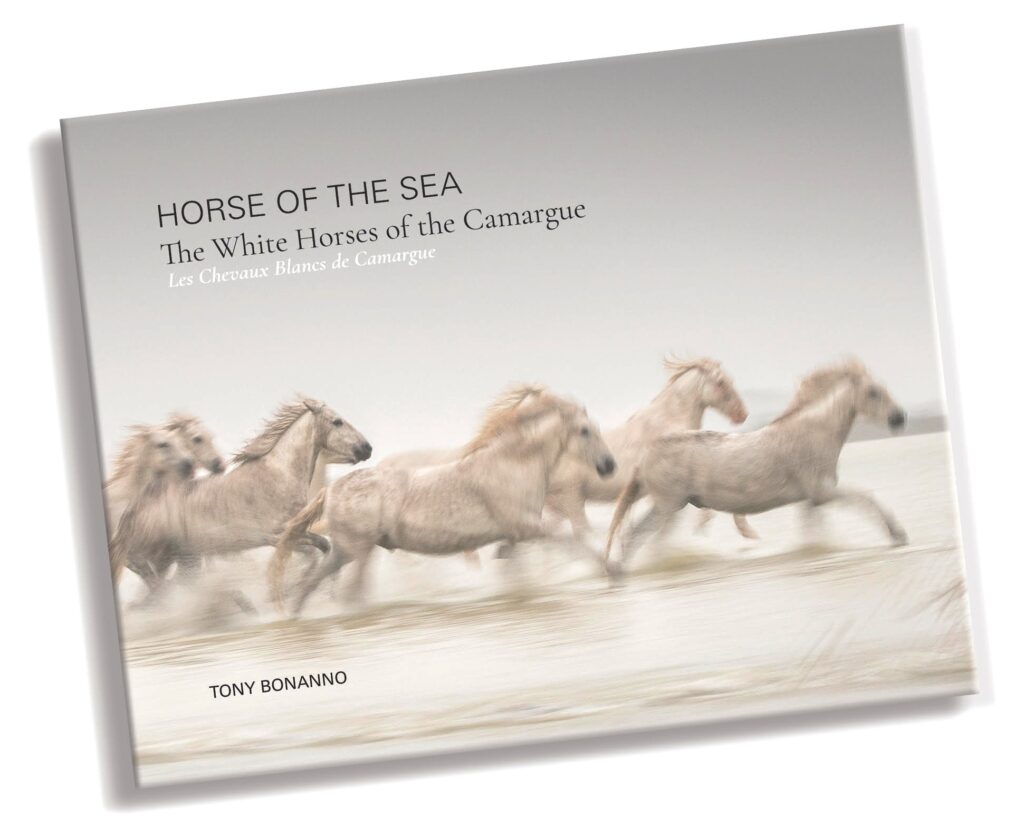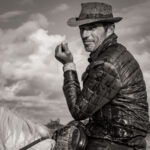 Horse of the Sea
Horse of the Sea
“This is a book about horses, of course. Those magnificent white horses indigenous to the Camargue area of Southern France. Living wild in the tough milieu of the Camargue wetlands and marshes, these animals have, over centuries, developed the endurance, toughness and quickness for which they are known today.” From the Foreword by Baron Wolman 2019 (1937-2020)
What better way to begin a book about horses than to provide a backdrop to their existence. The Horse of the Sea, by Tony Bonanno, is a fitting tribute to those stunning survivors. I am fortunate enough to have viewed them up close, a few years back. The images in this book are as powerful as if you were viewing them in person: muscles straining and taught, running free and unbridled.
I have known Tony for many years and consider him a friend of passion, dedication and pursuit. No matter his topic, it is followed by those three guidelines. A much sought-after photographer for commercial work, he is well suited for the fine art arena because no matter the subject he looks at it as if it were a piece of art. And, of course, his art is hanging on many walls of homes around the world, as well as in numerous museums.
Not simply a visiting tourist who wants to bring an image of a horse back home, Tony has immersed himself in the centuries-old culture all that keeps the legend of the Camargue Horse alive: the Gardians, the Bulls and Cattle, and even the Camargue Cross.
 The Horse: “The Camargue Horse is an ancient breed and probably existed in the region since prehistoric times. Some experts suggest the breed is very similar in appearance to the horses depicted in prehistoric cave paintings in France.”
The Horse: “The Camargue Horse is an ancient breed and probably existed in the region since prehistoric times. Some experts suggest the breed is very similar in appearance to the horses depicted in prehistoric cave paintings in France.”
The Gardians (right): “The Gardians are the “keepers” of the Camargue Horse. It is a culture that goes back hundreds of years in this region of France. The Gardian and their herders are responsible for managing the semi-feral herds and ensuring the purity of the breed and the protection of the herds. The breed is protected by French law.”
The Bulls & Cattle: “The Gardian and their “herders” are a traditional culture that raise the black Camargue cattle and Camargue bulls that are used in the bull rings of Southern France. The Camargue Horse is the traditional mount of the Gardian and the herders. Most of the Gardians’ herds are part of free roaming manades (ranch herds).”
The Camargue Cross: “The upper end of the Camargue Cross is a three prong fork with trident tips (the tool used by the Gardians), the lower end an anchor (with fish tail tips), and the anchor is topped by a heart. It stands for three cardinal virtues: Faith, Hope and Charity.”
Having a chat with the author, recently, he spoke of the horses with almost a spiritual reverence, one that permeates his whole being.
In his Preface, he writes about the increasing proliferation and growth of tourism in the area that foretells a dimming future for this ancient lifestyle that will affect not only the horses but also the Gardian culture and all that it encapsulates, including saddles and hats and vests, along with trident-tipped staffs and caged stirrups. All still in use just as they were in the 16th century.
If you are a lover of culture, animals, tradition, passion, connections and more, The Horse of the Sea belongs in a revered space in your bookcase. Don’t hide it, however, it is meant to be viewed again and again, as I have done.
Views: 69
